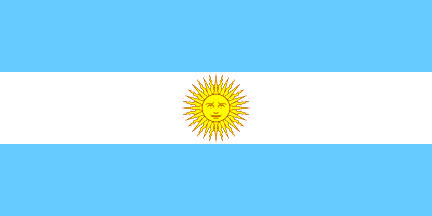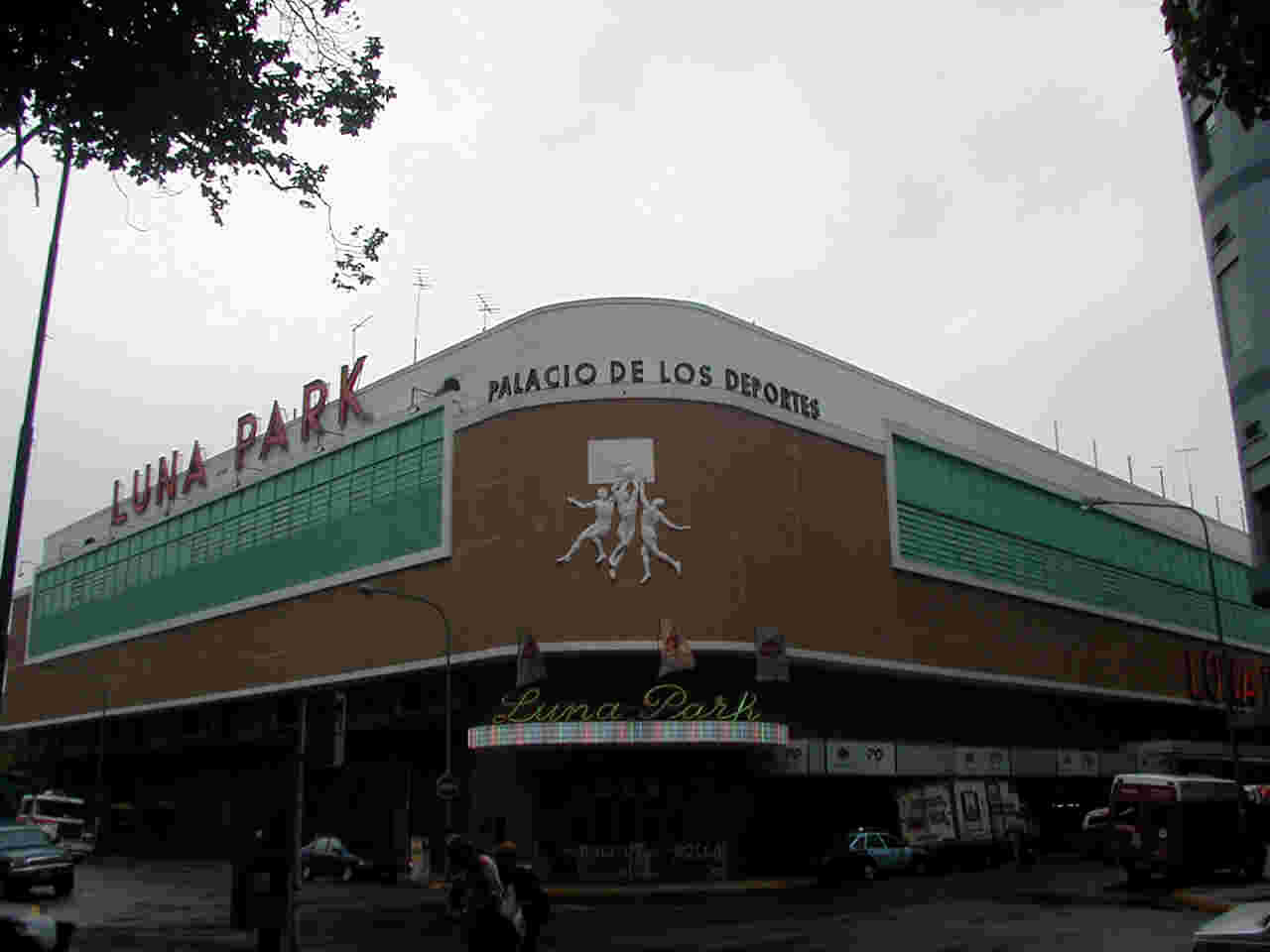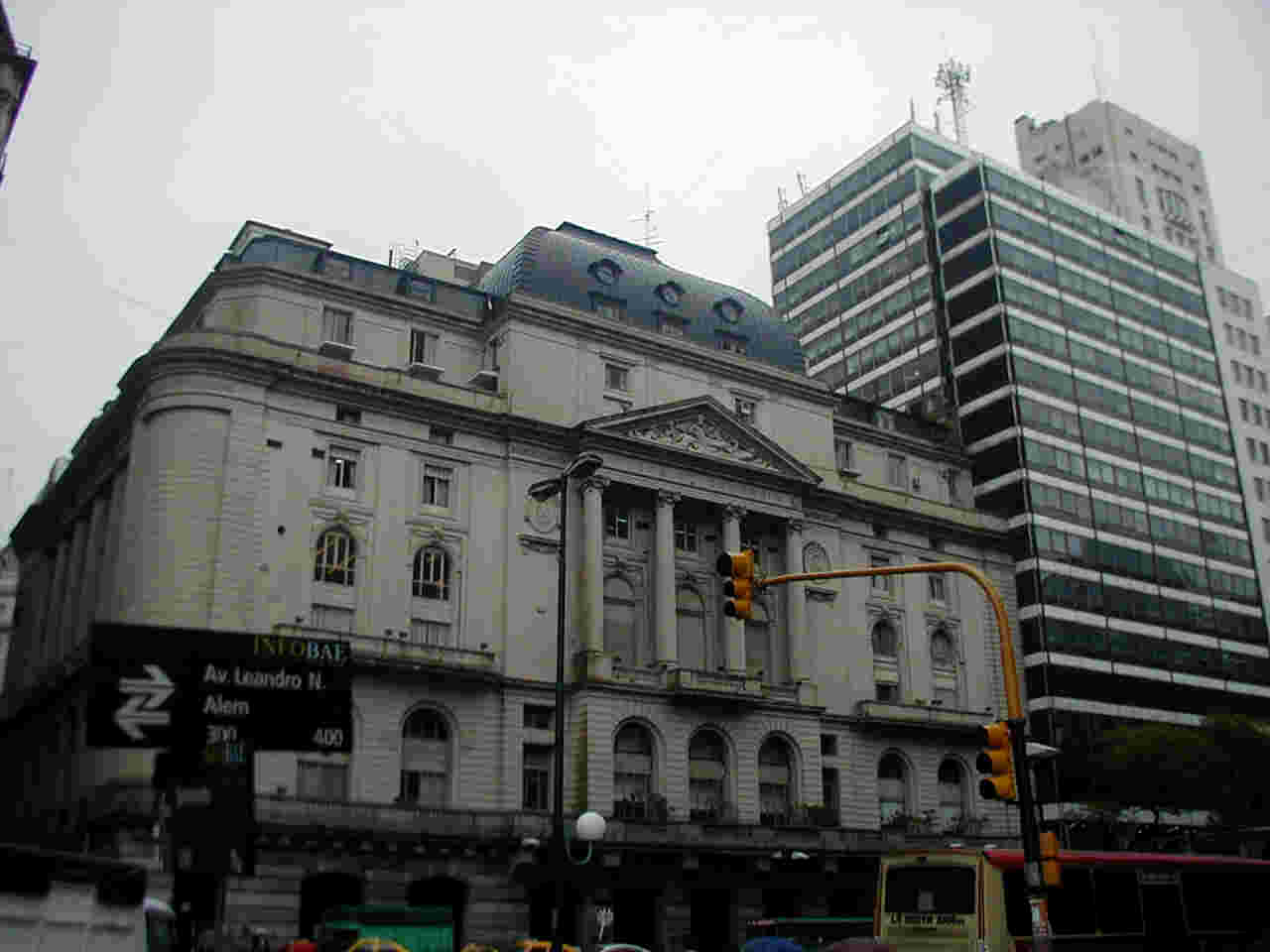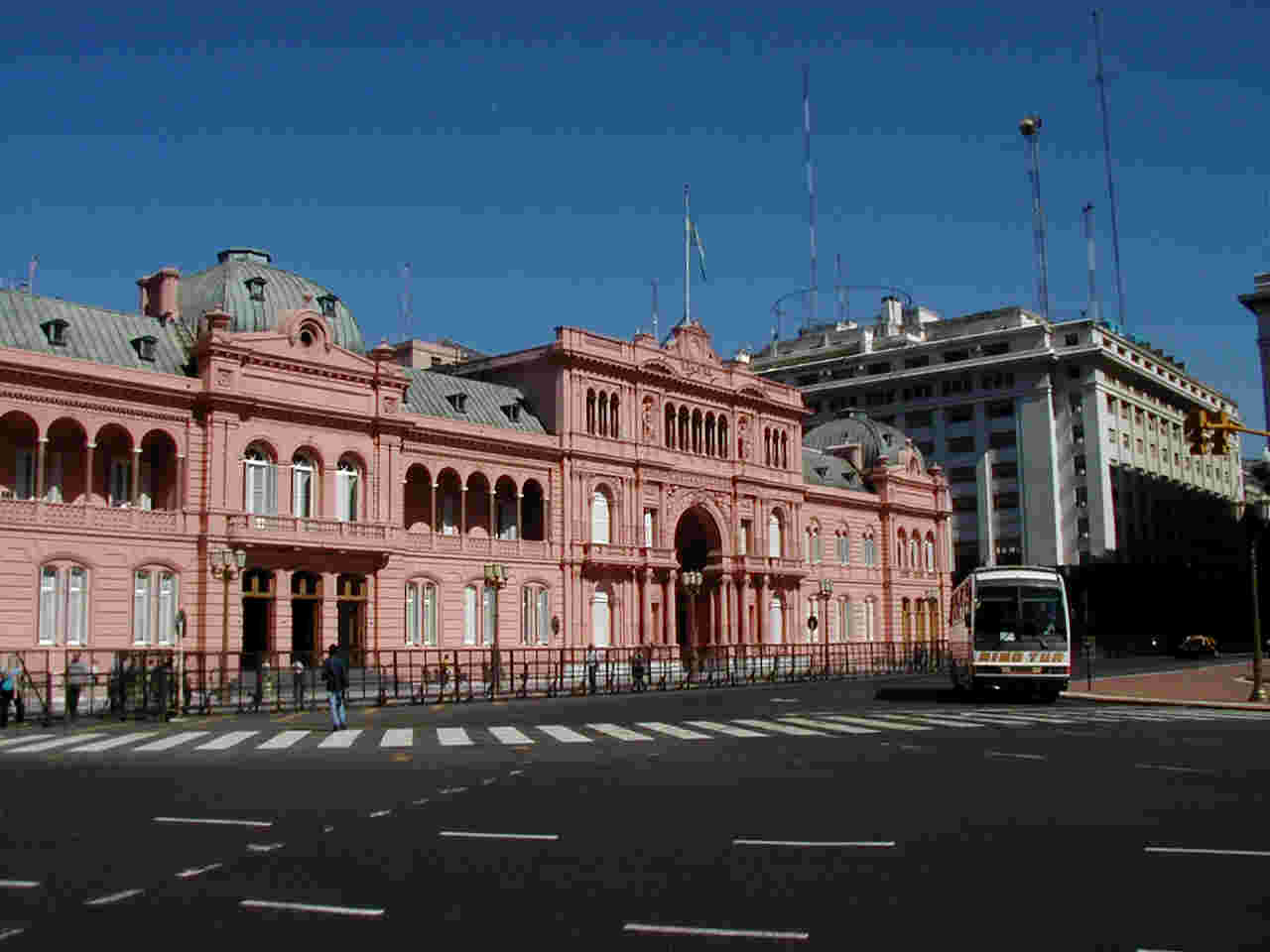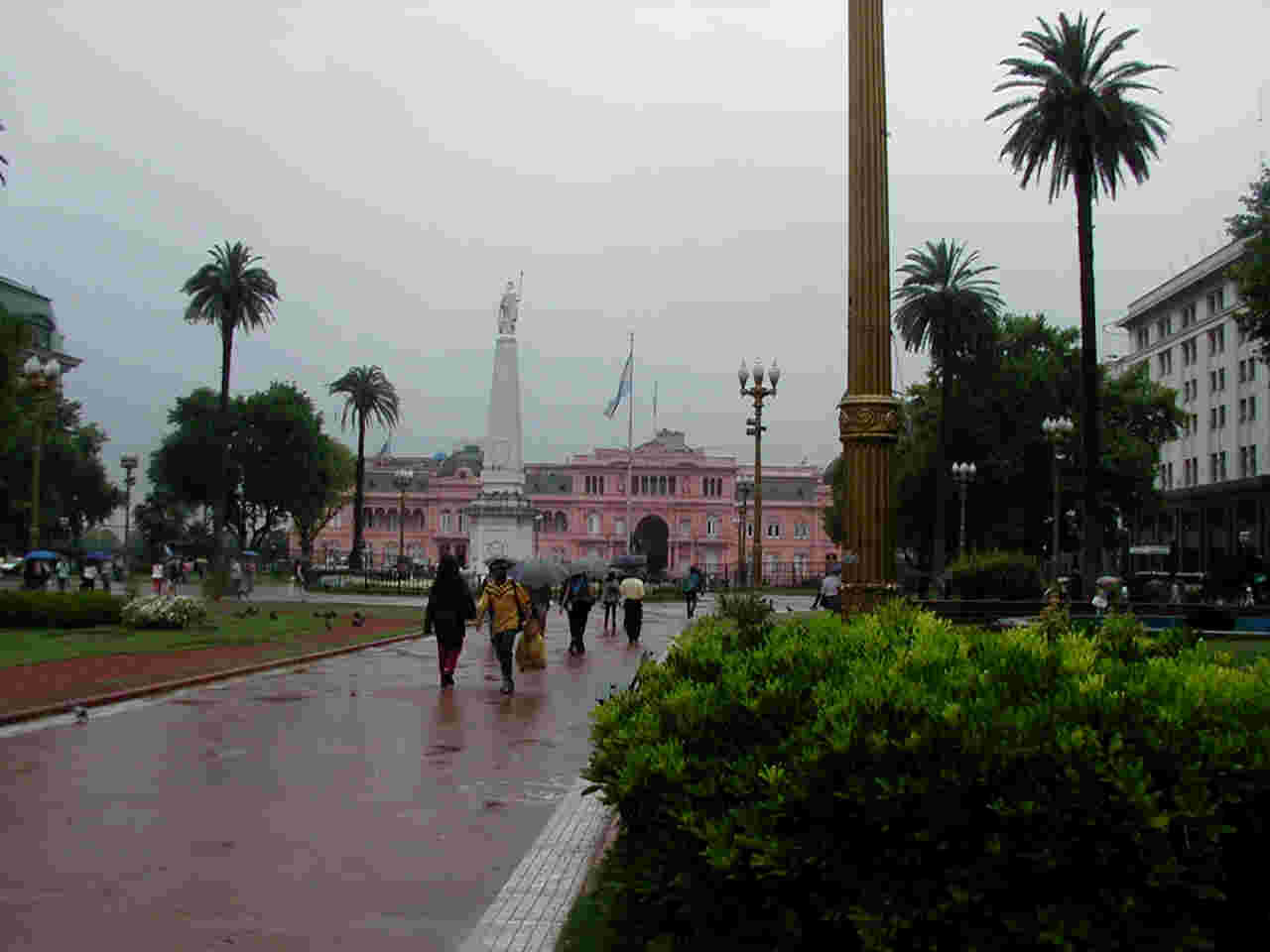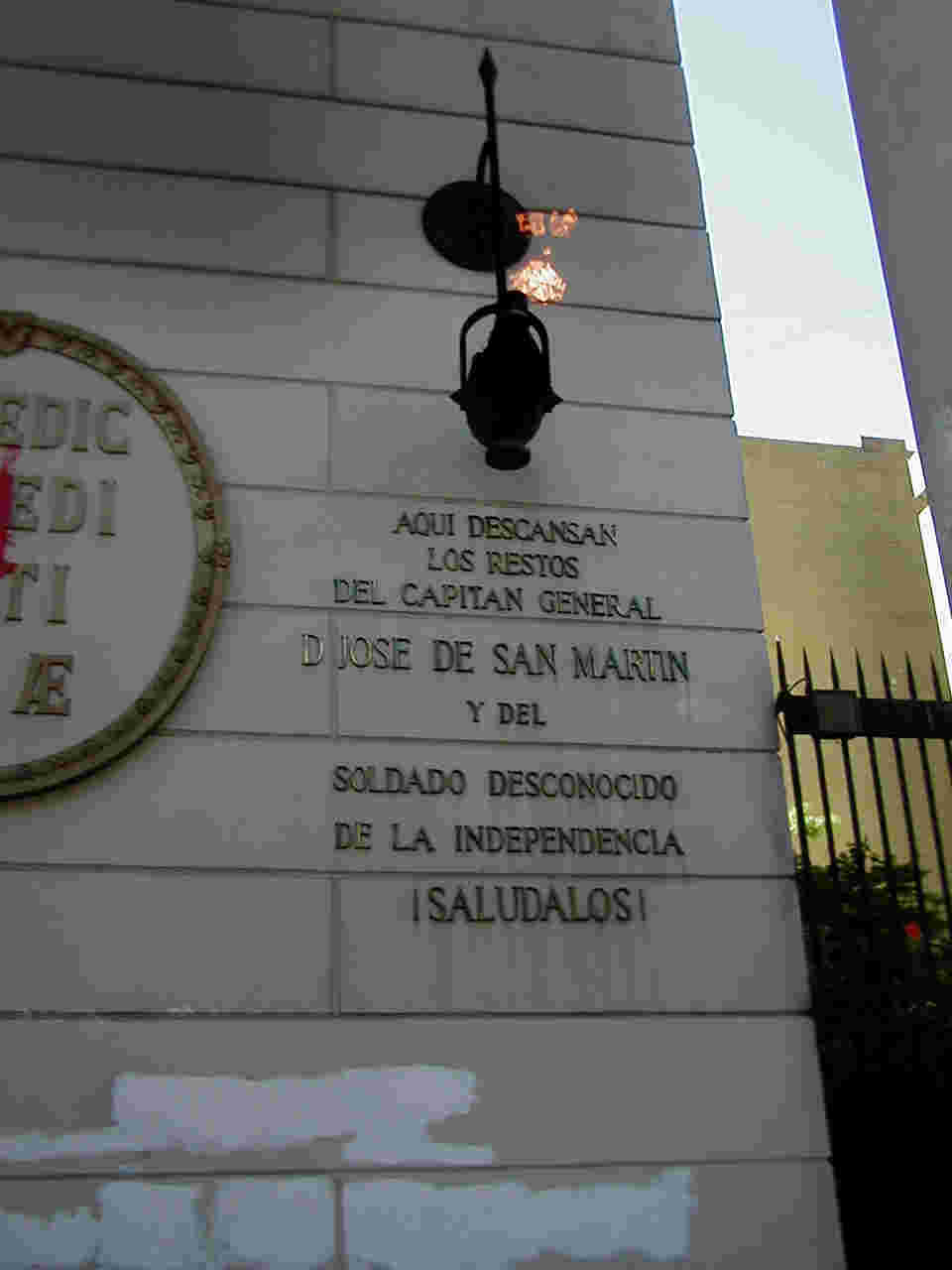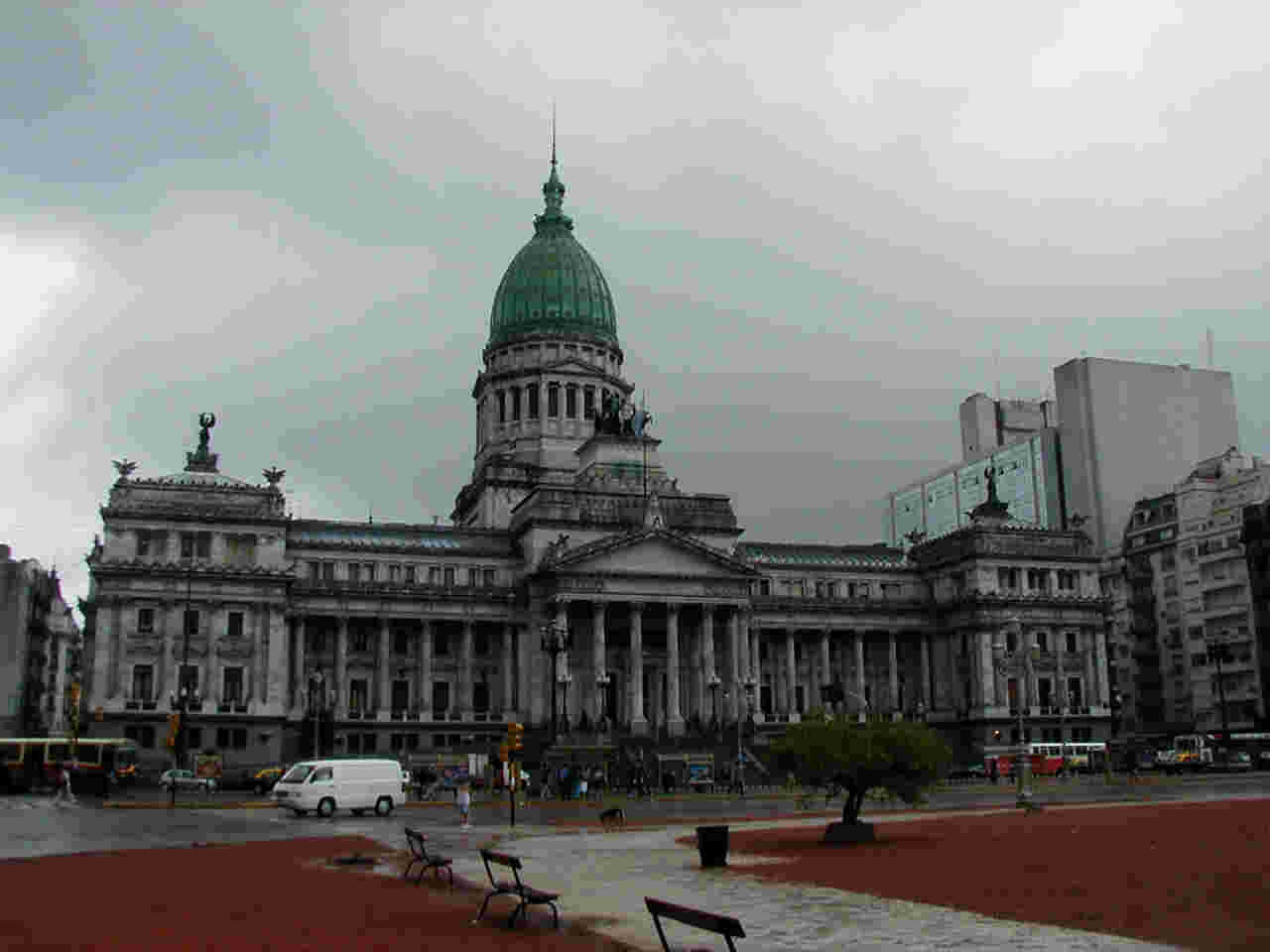|
|
Argentina 2002 |
My last day in Buenos Aires was a washout, literally. It rained all day, which prevented me from seeing as much as I would have liked. I limited my day's activities to Monserrat, saving La Boca for the next visit to the Argentine capital.
Monserrat
This is central barrio of Buenos Aires where most of the offices and government
buildings are located. My tour started
with the Palacio de los Deportes, also known as Luna
Park. This building sits on the
site of a former boxing ring, where Perón first met Evita.
Nearby is the Bolsa de Comercio, the country’s stock exchange.
The building dates from 1916 and public visits are not permitted.
|
|
|
| Remember the line in Evita, "... where Eva met Peron"? It happened here! | The Bolsa de Comercio |
Designed by Juan de Garay
in the 1580s, the Plaza de Mayo was
the settlement’s original square and arranged in the Spanish colonial style.
In 1808, the square was named Plaza Victoria by the invading British
forces, then received its present monikor two years later to commemorate the
declaration of Argentina’s independence on 25 May 1810.
On this day, the square hosted the masses, who came to celebrate the
deposition of the Spanish viceroy and the inauguration of the Primera Junta led
by Cornelio Saavedra. The
square was redesigned in 1880 by architect Juan Buschiazzo and landscaped a few
years later by Charles Thays. In
the 20th c. CE, the square hosted many rallies by Perón’s descamisados
and was bombed by the military in 1955. Since
it was raining outside, there was very little activity in the square.
There are a number of
important buildings around the Plaza de Mayo.
Sitting at the eastern end is the Casa
Rosada, Argentina’s most famous landmark and presidential palace.
Constructed between 1862 and 1885 in the European Renaissance style, the
structure sits on top of the remains of an old fort.
The building’s pink hue originated during the rule of Sarmiento, “…
when it was traditional to add ox blook to whitewash to provide color and
thicken the mix” (TO, 65). The
building’s central balcony has been used by dictators and presidents to
address the masses; it was also used by Madonna in the filming of Evita.
On the southern edge of the building the Museo
de la Casa Rosada, which chronicles the history of the building.
|
|
|
| The Casa Rosada, in the sunshine. The famous center balcony is in the left-center of this picture. | The Casa Rosada, as seen through the Plaza de Mayo. |
Facing the Casa Rosada on
the southwestern corner of the Plaza de Mayo is the Cabildo, a traditional occupant of a settlement’s main square in
the Spanish colonial style. Built
between 1725 and 1765, the building housed the city council until 1821.
The building shows a section of the recova,
the colonnade that completely encircled the plaza at one time.
|
|
|
| The façade of the Cabildo, the original city hall of Buenos Aires | A section of the recova, which used to wrap entirely around the Plaza de Mayo. |
Built in 1926, the Edificio
Menendez-Behety was the headquarters of firm specializing in Patagonian
wool. The building is typical of
the turn-of-the-century French style that is prevalent in the section of the
capital. Across the street is the Catedral
Metropolitano, the seat of the Archbishop of Buenos Aires. Consecrated
in 1836 and considered the country’s finest example of neoclassical
architecture, this is the sixth church structure on this site.
The façade, though, originates from 1791 and took 120 years to complete.
The inside is typical of most Latin American churches.
There are two interesting characteristics of the church’s interior:
first, “… the rococo, floral main altar stands out, as does a life-sized
Christ made from the wood of the native carob tree, dating from the 18th
c. CE and the oldest sculpted figure in the city” (TO, 66).
The second is the mausoleum dedicated to the country’s liberator,
General José San Martín. On the
exterior of the building is the general’s eternal flame.
|
|
|
| The Edificio Menendez-Behety, constructed in the classical French style that is so prevalent in the Argentine capital | The façade of the Catedral Metropolitano, the city's main cathedral. It looks more like a court of justice that a house of worship. |
|
|
|
| Another view of the cathedral's façade, this time on a sunny day. | The center nave of the cathedral |
|
|
|
| Another picture of the center nave of the cathedral | The eternal flame dedicated to Argentina's great liberator - General José de San Martín |
|
|
|
| One of the side altars, this one dedicated to the Virgin Mary | The central dome |
After experiencing the
Plaza de Mayo, I headed west on Avenida
de Mayo. Opened in 1894 to link
the Plaza de Mayo with Plaza del Congreso, the street is the city’s oldest.
The Subte, which was Latin
America’s first subway line when it opened in 1913, runs for five miles
underneath the street. The street
is filled with second-hand book stores, of which sold me some books covering
Argentine history.
|
|
|
| Built in 1898, the edifice of the Palacio La Prensa typifies the grandeur of Avenida de Mayo | This statue, which celebrates the life of Mariano Moreno, is one of many in the avenue’s center median |
At the western end of the
Avenida de Mayo is the Plaza del Congreso.
The plaza is shaded by several types of trees, including the tipa,
jacaranda and ceibo (the country’s
national tree). Because of its
proximity to the congress buildings, the plaza is a magnet for demonstrations,
including retirees who gather here every Wednesday to demand their pensions.
In the center of the plaza is the Monumeno
a los Dos Congresos. Installed
in 1914, the monument celebrates the two congresses that catalyzed Argentina’s
19th c. CE independence movement: the 1813 Assembly in Buenos Aires
that abolished slavery in the colony and the 1816 Tucumán congress that
effectively ended Spanish rule in the country.
By the time I had reached the square, the intensity of the rainfall had
increased, and I was soon looking for cover.
|
|
|
| Plaza del Congreso | Monumento a los Dos Congresos |
At the western edge of
the square is the Greco-Roman domed Palacio
del Congreso. Designed by
Victor Meano and finished in 1906 for the country’s centenary celebrations,
the building is home to Argentina’s Senate (south side) and House of
Representatives (north side). According
to the Insight Guide, “… The interior is decorated with appropriate
pomp: important paintings, bronze and marble sculptures, luxurious red carpets,
silk curtains and wood paneling” (122). Since
I couldn’t enter the building, I’ll have to take the guide book at its word.
|
|
|
| The storm clouds are brewing over the Palacio del Congreso | A much better picture of the Palacio del Congreso |
From here, I took a cab back to the hotel. I did not venture to La Boca, reserving that trek for my next visit to the Argentine capital. I spent most of the afternoon in the hotel room, napping and packing for my trip to Salta.
Proceed to Day 7 - Salta or return to
the Argentina Main Page
